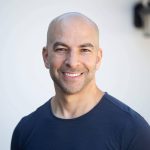Attia and Kohane Examine What It Takes To Drive AI into Clinical Practice

David Shaywitz
Peter Attia is a prominent physician-turned-California longevity guru, and (to paraphrase Woody Allen) as California longevity gurus go, he’s one of the best, striving to remain grounded in science and data.
Known for his popular book Outlive, and his affection for “rucking” (look it up), Attia is also the host of a long-form podcast called The Drive, and an engaging guest on other worthwhile podcasts including Patrick O’Shaughnessy’s “Invest Like the Best” (here) and Bari Weiss’s “Honestly” (here). He’s also the founder of Early, which describes itself as a science-based health program to “build your own, personalized, end-to-end longevity playbook.”
Attia’s latest podcast features a lengthy (two hour), exceptionally illuminating interview about AI and medicine with Zak Kohane, a physician-scientist at Harvard Medical School and head of the Department of Biomedical Informatics (with which I’m affiliated).
The discussion starts with a quick, knowledgeable review of the history of AI (interested readers might also enjoy several of the books summarized here), and then explores how AI is likely to impact health and medicine.

Peter Attia
The entire episode – with thoughtful questions from Attia and nuanced replies from Kohane – is unquestionably worth the time (and extra credit if, like me, you listen while jogging, even if not quite rucking).
However, I wanted to highlight three related topics raised by these two senior medical experts that were especially striking:
- How AI may fit into the evolution of medicine (tl;dr AI augmentation of non-MD health providers, initially in domains where there aren’t enough doctors);
- What’s most likely to keep the promise of AI in health from being fully realized (tl;dr incumbent healthcare systems maintaining their stranglehold on patient data)
- What’s the most promising driver of AI-enabled disruption in medicine (tl;dr empowered, exceptionally motivated patients and their families)
AI and the future of medicine
AI is already poised to impact medicine. Kohane highlights the promise of AI in image-based specialties such as dermatology and radiology, where high-resolution images, fed into machine learning models, can identify image abnormalities as well as (and in many cases even better than) the human eye.
He also points out that in contrast to the infamous prediction of legendary AI expert Geoff Hinton (who suggested in 2016 that radiologists would be obsolete in 5-10 years), AI’s “are not replacing the doctors because image recognition process is only part of their job.”
Focusing on the use of AI for physician augmentation (rather than replacement), Attia suggests the adoption of AI would likely occur in two stages. The first specialties to be impacted, he says, will probably be those he describes as visually focused: pathology, radiology, dermatology, and cardiology (especially those most involved in interpreting cardiac imaging studies). Next would be specialties he sees as focused on integrating “language data” and visual data, like primary care doctors and pediatricians.

Zak Kohane, Chair of the Department of Biomedical Informatics, Harvard Medical School
While Kohane says he agreed with Attia’s proposed order of adoption, he emphasizes that a more immediate consideration is the shortage of doctors in key areas like primary care.
“You have to ask yourself, how can we replace these absent primary care practitioners with nurse practitioners, with physician assistants augmented by these AIs, because there’s literally no doctor to replace.”
More broadly, medicine’s challenge and AI’s opportunity, as Kohane describes it, is that fewer doctors are choosing to go into specialties not associated with highly financially remunerative procedures. While there doesn’t appear to be a shortage of future interventional radiologists or dermatologists (which he describes as high-paying and high prestige), there aren’t enough traditional radiologists or primary care doctors.
“I go around medical schools and ask who’s becoming a primary care doctor? Almost nobody,” Kohane said. “So primary care is disappearing in the United States. In fact, Mass General and Brigham announced officially they’re not seeing [new] primary care patients [see here].”
Kohane continues,
“There’s a huge gap emerging in the available expertise. So, it’s not what we thought it was going to be, that we had a surplus of doctors that had to be replaced [by AI]. It’s just we have a surplus in a few focused areas which are very popular. And then for all the work of primary care and primary prevention kind of stuff that you [i.e. Peter Attia] are interested in, we have almost no doctors available.”
The gap in “expert clinicians,” Kohane suggests, might be filled by non-MDs like nurse practitioners and physician-assistants augmented by AI.
Impediment to AI-Innovation in Healthcare
The tremendous potential of AI today, Kohane explains, can be attributed to the compounding effects of large data sets, neural networks, and suitable computer chips (GPUs).
Kohane describes the tremendous importance of rich clinical datasets, the sort of information one might associate with electronic health records (EHRs).
However, he notes that the EHR “turns out not to be the answer in the United States. Why? Because in the United States, we move around. We don’t stay in any given health care system that long. So very rarely will I have all the measurements made on you.”
However, he adds, this isn’t the case in other countries, and cites the example of the Clalit in Israel, which he notes “published all the big COVID studies looking at the efficacy of the vaccine. And why could they do that? Because they had the whole population available, and they have about 20, 25 years’ worth of data on all of their patients in detail and family relationships.”
In the U.S., he asks, “Where is that data going to come from?”
Some organizations in the U.S. believe “they can get enough data” on their own, he says, and cites the Mayo Clinic as one example. He also notes that “there are some data companies that are trying to get relationships with health care systems where they can get de-identified data,” although he doesn’t sound very optimistic about this approach.
Attia, for his part, strongly agrees that health data is exceedingly “unfriendly,” and cites a pain point from his own practice.
When lab tests are obtained for patients, he says, and “we want to generate our own internal reports based on those…it’s almost impossible to scrape those data out of the labs because they’re sending you PDF reports. Their APIs are garbage. Nothing about this is user friendly.”
“Just because our patients own the data doesn’t make it easy to get,” he continues. “There is no aspect of my practice that is more miserable and more inefficient than data acquisition from hospitals. It’s actually comical, absolutely comical.”
Attia adds, “Is there a more user-hostile industry from a data perspective than the health industry right now?”
Kohane agrees, and explains, “There’s a good reason why. Because they’re keeping you captive.”
Going forward, he says, he’s most concerned about the tendency of “the medical establishment” to “pour concrete over practices.”
He explains that hospitals are huge entities that bring in huge revenue but have very small margins. In this situation, he argues, “you’re going to be very risk averse and you’re not going to want to change.”
Consequently, while Kohane said he remains excited about the potential of new businesses that come up with ways of delivering data-driven insights to patients about their individual health needs, he’s concerned about what these startups are up against. Specifically, he warns of “hospitals doing a bunch of information blocking … that will make it harder for these new businesses to get created.”
Can Patients Drive Disruption?
A key theme of both Kohane’s recent book about GPT-4 (including in particular the sections written by co-author Carey Goldberg) as well as Kohane’s conversation with Attia is the embrace of generative AI tools by patients. “They’re being used by patients all the time in ways that we had not anticipated,” Kohane says.
Kohane cites the example of a mom whose child had confusing symptoms that doctors struggled to synthesize into a diagnosis. Frustrated, she typed the information into ChatGPT, which suggested something called “tethered cord syndrome,” subsequently confirmed by imaging.
At this point, Attia asks a critical question: was it surprising that none of the doctors had tried to use ChatGPT to assist with the diagnosis?
Kohane’s deeply discouraging response was that “most clinicians I know do not have what I used to call the Google Reflex” – the instinct to look up and pursue curious and confusing observations.
The reason, he suggests, is that “doctors are in a very unhappy position these days. They’re really being driven very, very hard,” and morphing “into data entry clerks.”
Essentially, Kohane explains, physicians are too busy with the operational aspects of medicine – in particular, documentation and billing. This means they have less time to think, and perhaps less incentive to think.
(I anticipated and discussed this challenge – preserving creativity in medicine – 20 years ago, see here.)
Consequently, Kohane sees patients, and those invested the most in them (especially their families), as the most powerful disruptive force in medicine.
(I’ve also emphasized the critical role of patients and families as key drivers of care – including in the NYT here, here, as well as in The Atlantic here).
Kohane points to patients without primary care doctors who might be worried about a rash, for example. They recognize that they have a power tool, he says, and given the choice between waiting months to potentially be seen or using the tool, they’ll use the tool.
“It’s better than no doctor for sure. And maybe better.”
Kohane also emphasizes that because patients have the legal right to their own data, even though accessing these data can often be difficult, the legal right creates opportunities.
He points to Apple Health, which he says has partnered with 800 hospitals and makes it easy to get some of your key health data on your phone or computer.
“Now, there’s not a lot of companies that are taking advantage of that,” he says, “but right now, that data is available on tens of millions of Americans.”
Kohane predicts that in “the next 10 years, there’ll be a company, at least one company that figures out how to use that patient’s right to access through dirty APIs, using AI to clean it up, provide decision support with human doctors or health professionals to create alternative businesses.”
Yet, he acknowledges, “I don’t want to underestimate the medical establishment’s ability to squish threats, so we’ll see.”
Bottom Line
Rapidly improving AI is likely to impact medicine by augmenting the capabilities of specialists, particularly those focused on visual diagnoses. AI might also provide the expert insight to enable non-MDs to provide care in situations where MDs are increasingly unavailable. The development of AI for clinically focused applications (in healthcare as well as in drug development) depends critically on the availability of relevant clinical data, which (despite the existence of at least some legislation) remains excruciatingly, maddingly, disturbingly difficult to pry from the grip of incumbent health organizations.
But if these organizations are an immovable object, then patients and their families might represent an irresistible force, determined to leverage all available tools to accelerate diagnoses and identify potential treatments (David Fajgenbaum’s own miraculous story, as well as the journeys chronicled by Amy Dockser Markus, come to mind – see here). Ideally, despite institutional and occupational hurdles, inquisitive physicians such as those celebrated by Judah Folkman will also drive the use and acceleration of AI technologies in service of improved patient care.





